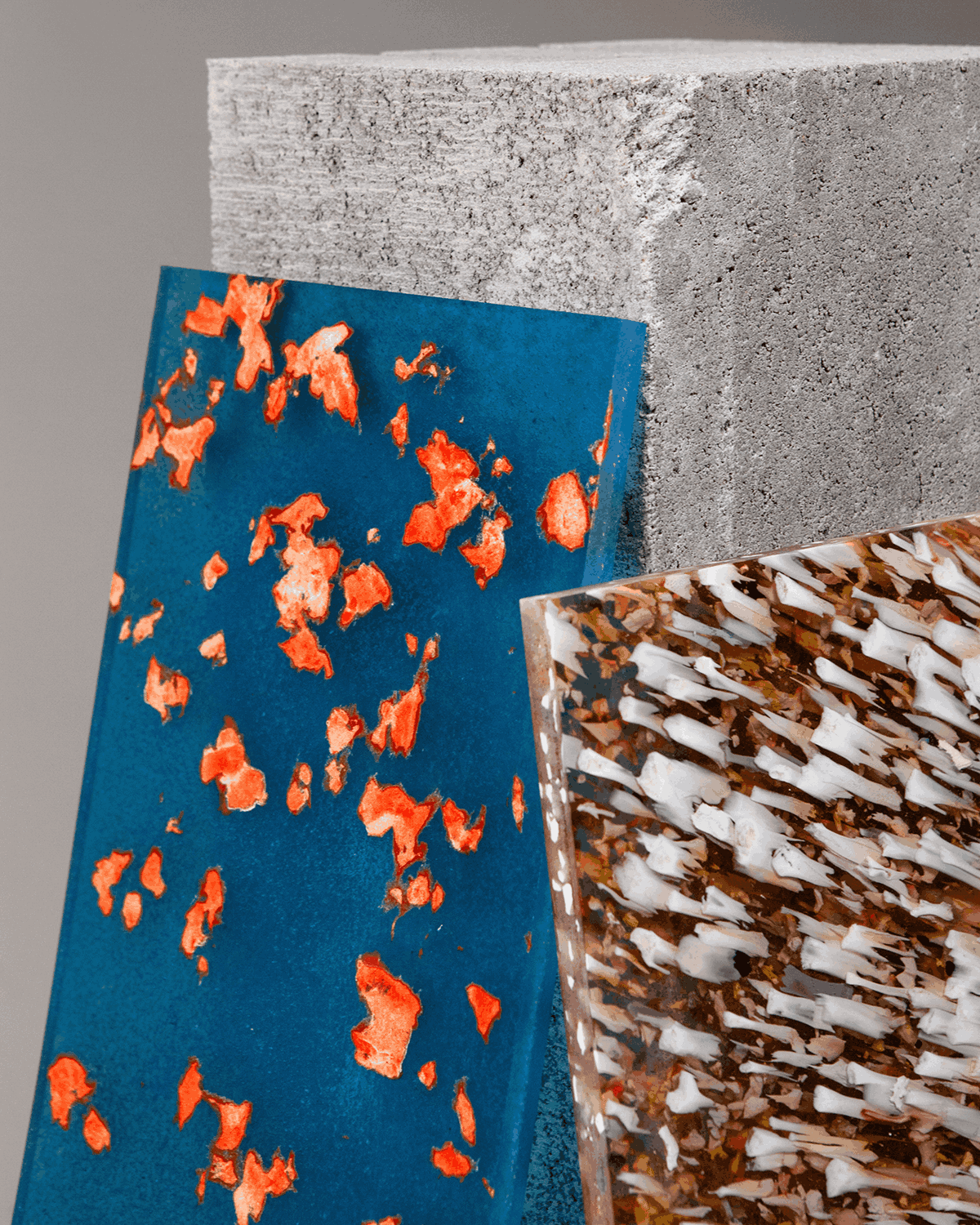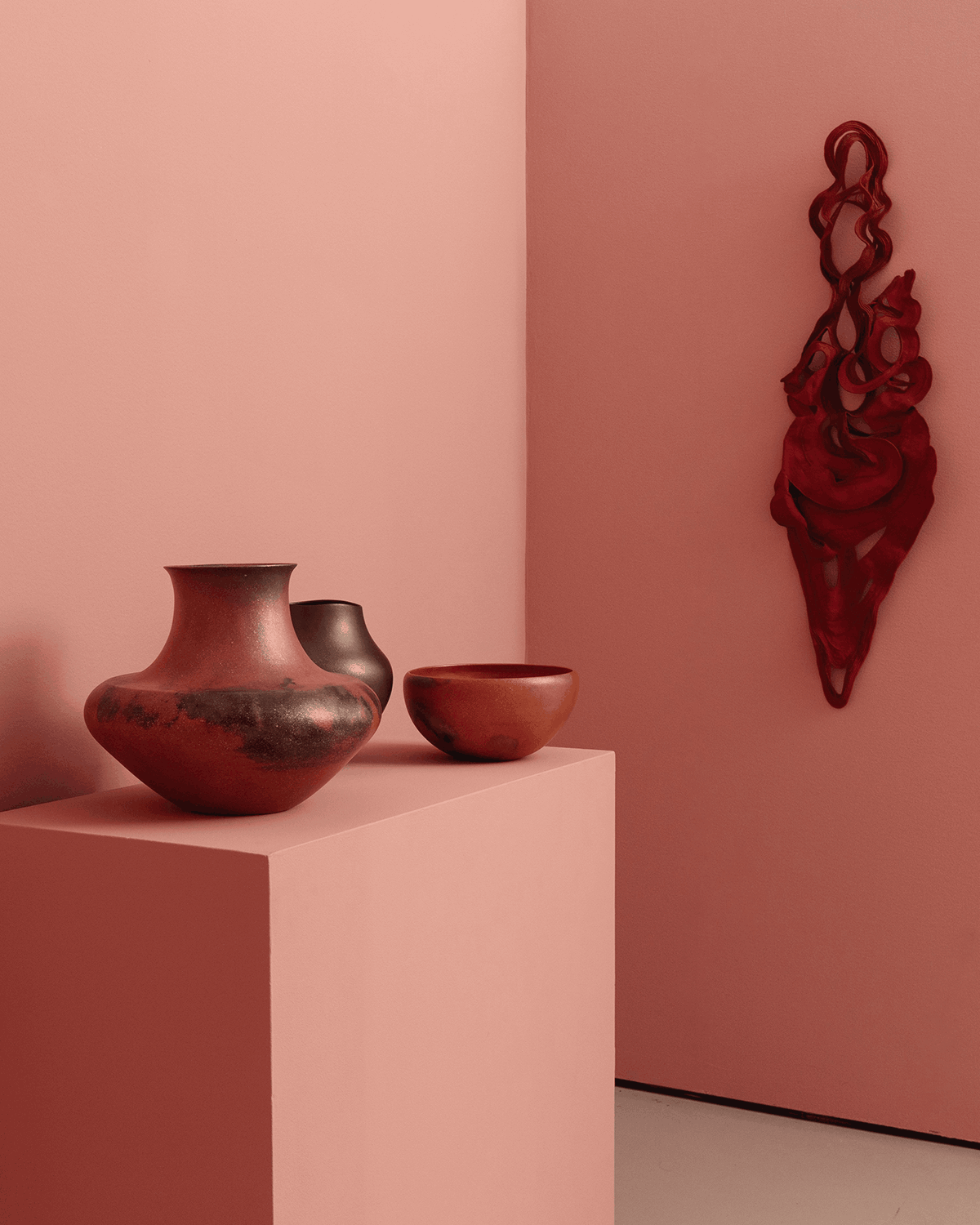
As the world continues to grapple with the effects of climate change, designers and creatives are turning to — and inventing — new sustainable alternatives for common materials. Here, we showcase 12 innovative eco-materials for everything from furniture to finishes that prioritize the health of the planet without compromising style.

Developed by Copenhagen green-tech design brand Mater, Matek is made from a variety of waste materials and debris (coffee bean husks, sawdust, textiles et cetera) combined with a biodegradable plastic binder derived from sugarcane. The resultant press-mouldable material is water-repellent and durable, and can replicate the look of natural stone, terrazzo or marble. Patricia Urquiola’s indoor–outdoor Alder collection of tables and stools highlights the biodegradable material’s appealing tactility and expressive nature.

A hardwood alternative, plant-based lumber from Poland’s The True Green in partnership with Green Lanes is composed of fibres and stems from fast-growing annuals, like hemp or flax, and eco-adhesives. Suitable for furniture (Husarska Design Studio’s HempStool, for example), interior fittings and construction timber, the hardy material reduces the demand for tree felling, absorbs more than a tonne of CO2 per cubic metre and can play a key role in rehabilitating and reconstructing ecosystems.

For his Contourage console table, Johan Wilén, designer and co-founder of Stockholm-based Studio TOOJ, worked with Germany’s Sandhelden, an expert in sustainable 3D printing methods. Along with locally sourced quartz sand, the manufacturer uses furan-based binders that are derived from corn husks, rice hulls, sugarcane and other biomaterials; to further lessen its overall material consumption, the vivid cobalt-blue console is printed as a hollow structure and finished by hand to retain a rugged texture.

A collaboration between Cosentino and research-based design studio Formafantasma, Earthic by Silestone is an innovative surface that limits the extraction of raw materials through its use of premium minerals, post-industrial recycled glass, PET, post-consumer bioresin and Dekton fragments. Manufactured with a maximum of 10 per cent silica using 99 per cent recycled water and 100 per cent renewable electric energy, the collection comes in a range of patterns and colours.

A new addition to The Good Plastic Company’s Polygood series of fully recycled and recyclable plastic panels, the Translucent Collection transforms clear CD cases into high-quality fire- and UV-resistant and waterproof interior–exterior surfacing. Elements like recycled industrial tubes, spools, acoustic panels and single-use cutlery are added during production to create the 19 vibrant patterns available.

German industrial designer Carolin Schelkle has created roof tiles and shingles using palm leaves, stems and empty fruit bunches left over from palm oil production. Once shredded and dried, the fibres are mixed with a limestone-based mortar to become a rigid building material that is water- and fire-resistant and insulating. Ground remnant bricks can be added to tint the shingles.

Contrary to many architectural paints, which use synthetic plasticizers and petrochemicals as a base, Alkemis incorporates raw materials and clear mineral quartz at its foundational layer. Tinted with artist-quality natural pigments and earthen minerals, the paints improve indoor air quality, absorb and neutralize chemicals, and are water vapor–permeable, which means they hinder mould and fungus growth. Free from toxic synthetic pigments, VOCs and other hazardous pollutants, the paint comes in 120 colourways, all with a velvet matte finish.

Developed by Momentum Textiles & Wallcovering with Versa Designed Surfaces, Circon possesses the durability of conventional Type II vinyl but has an environmentally sensitive formulation: Made from 70 per cent bio-sourced, rapidly renewable resources — sustainably forested wood-based feedstock, an algae-like base material that seques- ters carbon during its production and a proprietary renewable backing material that also absorbs carbon during growth — the recyclable wallcoverings have a closed-loop life cycle. A collection of four nature- and art-inspired patterns introduced Circon, which can also be specified for more than 100 of the brand’s other designs and collections.

A recent innovation from Creative Matters, EcoAx is an environmentally responsible woven Axminster made from wool with a biodegradable jute backing that decomposes within 12 months, enriching the soil as it does so. An alternative to synthetics like nylon, the new material will be an option available for all of the brand’s commercial and residential rugs and carpets, with a no-glue installation method to keep the flooring fully biodegradable. At end of life, the carpets can be recycled, upcycled and even shredded for compost.

An interior cladding derived from plant-based biomass — mainly corn cob cores — CornWall is positioned as an organic alternative to ceramic tiles and high-pressure laminate. Developed by Amsterdam-based Front (formerly StoneCycling) with Belgium’s Circular Matters, the upcycled product is highly durable and moisture-repellent, and will be supplied with a demountable anchoring system for vertical applications. It can be tinted with biodegradable pigments and, since no glue is needed, the carbon-neutral material is completely re-usable and recyclable.

Seastex spent years researching and experimenting with the potential of mussel “beards” (the inedible natural threads these mollusks use to cling to rocks and seabeds that are removed and discarded before cooking), eventually transforming the byssus fibres into a “cloud-like substance” named Seawool, a structurally sound, naturally fire-retardant material with unique acoustic and insulation properties. Its first product — ABC Tiles — is 100 per cent renewable, recyclable and biodegradable and can be used on walls and ceilings to improve sound quality and noise levels in a range of interior spaces.

Danish manufacturer Søuld has been reviving a centuries-old tradition of drying and pressing the marine plant eelgrass into durable sheets that can be used for interior wall panels and baffles. Now, FilzFelt has added this 100 per cent recyclable and texturally rich material to its portfolio of acoustic solutions. The Søuld eelgrass acoustic panels can be used bare or be paired with any of FilzFelt’s wool felts in over 90 colours (with chamfered or wrapped edges).
For more eco-materials, visit our Spec Sheets section.
From mussel beards to corn cobs, these eco-materials set new standards for sustainable design.
